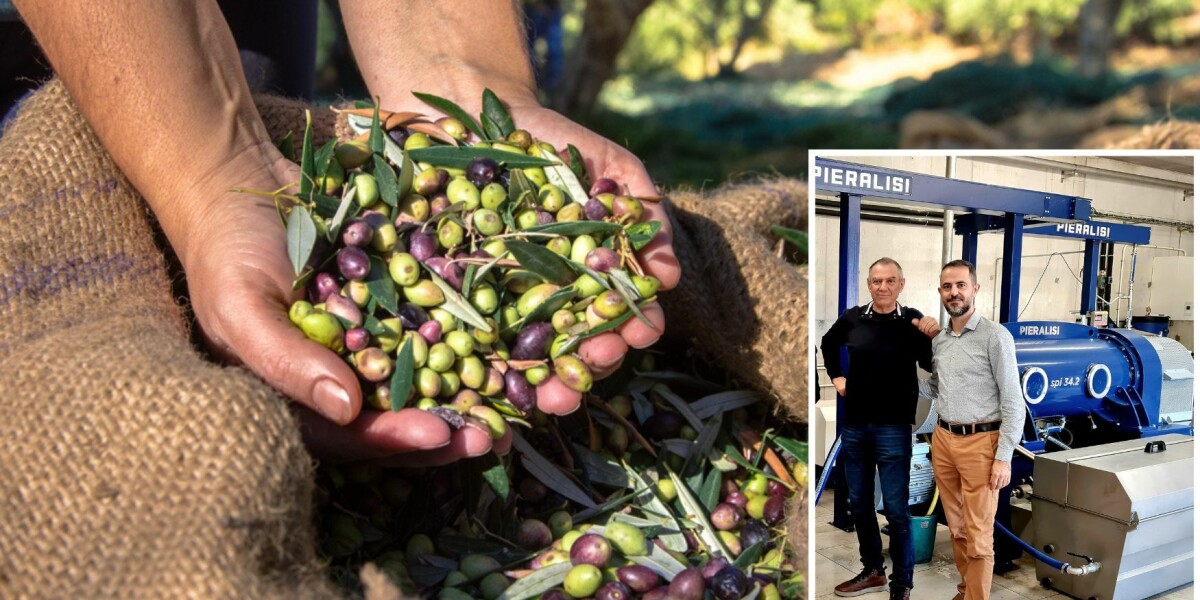
- Select a language for the TTS:
- UK English Female
- UK English Male
- US English Female
- US English Male
- Australian Female
- Australian Male
- Language selected: (auto detect) - EN
Play all audios:
MEMBERS BRING IN A FEW KILOS UP TO SEVERAL TONNES OF OLIVES TO BE PRESSED - FIND A CO-OPERATIVE NEAR YOU An olive-pressing co-operative is celebrating its centenary this year with the
inauguration of a new moulin. It was installed at the start of the season on October 15 and has already attracted new growers to the Saint-Cézaire-sur-Siagne co-operative in the
Alpes-Maritimes. GROWERS BRING A FEW KILOS UP TO SEVERAL TONNES President Jean-Pierre Franchi said: “We’ve had a lot of new people signing up, about 100.” Around 700 olive growers – many of
them ordinary members of the public – have now joined. The co-operative, managed by an elected board of 15 volunteer directors, aims to provide good-quality equipment and support to a wide
range of local growers. “We have a lot of small producers who come to us, as well as big ones,” said Mr Franchi, 66. “One customer arrived with five kilos and others with two, three or four
tonnes. “It’s the same in terms of age groups: there are young people and then older ones,” he said. READ MORE: FRENCH OLIVES: QUALITY OVER QUANTITY THE CO-OPERATIVE WAS ESTABLISHED IN 1924
The mill was established in the 1800s and is located on the banks of the Siagne river. “They used the water from the Siagne to turn the millstones, and it was easier to take the olives down
to the mill below than to carry them up,” Mr Franchi said. The co-operative was created in 1924, and it bought the building the following year. It housed a flour mill upstairs, and the olive
oil mill on the ground floor. LIFTING CRATES OF OLIVES BECAME TOO ARDUOUS In 1979, the council bought the old mill from the Saint Cézaire olive-growing co-operative for a symbolic franc.
“The commune then created a small but not very functional building and bought the first mechanical extraction mill. “It lasted about 20 years and, in 1998, the machines were replaced by
slightly more efficient ones. “It was these machines that the co-operative was still using last year,” he said. “All this in a building that was no longer adapted to today’s very arduous
work. In this old mill, the olives were handled in crates weighing between 15 and 25 kilos. “So when you’ve got 10 tonnes to shift, with crates weighing up to 25 kilos, and you’ve got to put
them on the scales and stack them, it’s a very physical job. “Even younger people had trouble coping.” READ MORE: FRENCH VINEYARD DREAM - EQUIPMENT NEEDED TO TURN YOUR GRAPES INTO WINE NEW
MILL IS IMPORTANT FOR FUTURE GENERATIONS OF OLIVE GROWERS Mr Franchi pledged, when he was voted in as president in 2012, to ease that burden, and the new mill is the biggest step. Although
there is more work to do on other parts of the building housing the mill, he is happy to pass the baton to the next generation of millers. “We decided to build this new mill because of the
young people involved,” he said. “Our elders passed on this heritage to us, and our duty was to pass on to future generations a heritage that will enable them to ensure the olive tree
remains important for the commune of Saint-Cézaire. “This co-operative is part of our cultural, economic and agricultural heritage. It has an important role to play. “People who had a few
olive trees on their property came to sign up and, for the first time, they restored plots of olive trees that had not been looked after until now. “When everything is more or less finished,
we’ll hold the official inauguration and celebrate the co-operative’s 100th anniversary,” he said. To find a co-operative olive mill near you, see the right hand dropdown menu HERE. RELATED
ARTICLES UNUSUAL FRENCH PROPERTIES: MILL OWNERS CAN SEE WATER BELOW THEIR FEET MEET THE PRODUCERS: THE TOULOUSE FARMERS WHO MILL THEIR OWN CROPS US-INSPIRED FOOD CO-OPS OFFER ALTERNATIVE TO
CHAINS IN FRANCE









